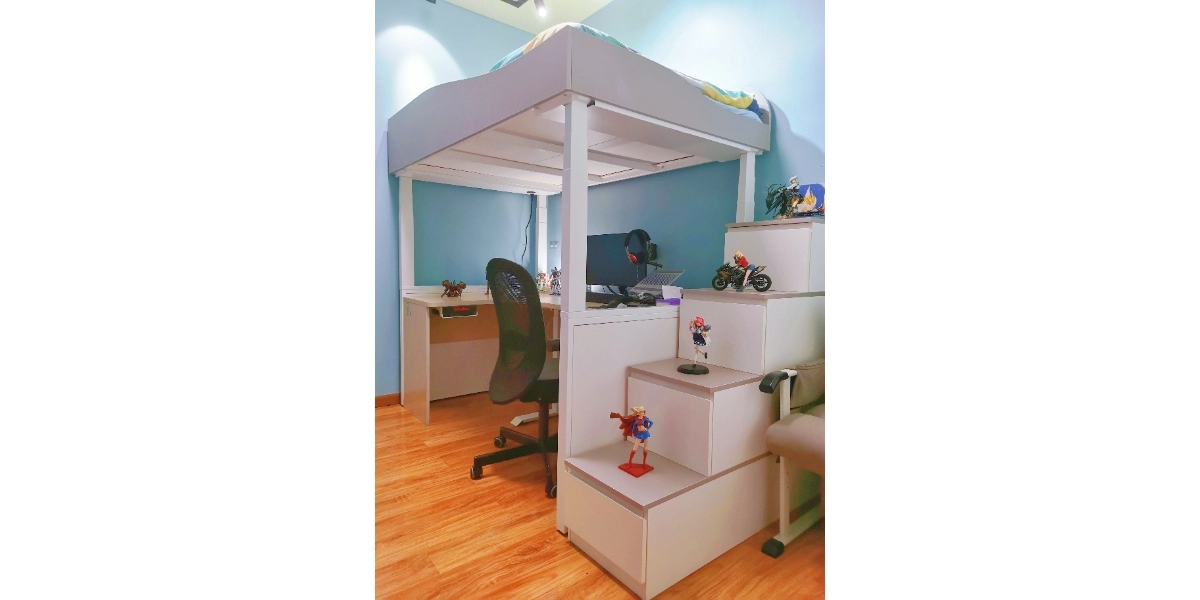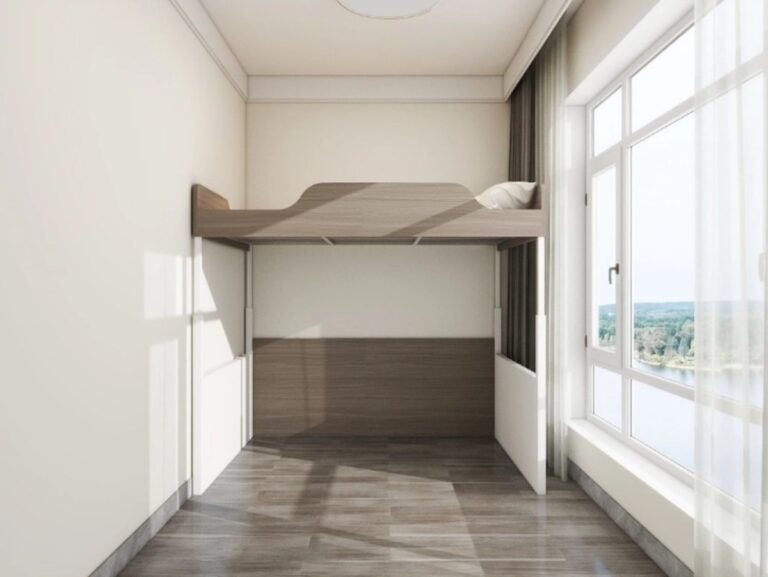2025 – 2030 North American Residential Furniture Trends
The North American residential furniture market is currently experiencing significant changes and development, with trends that are crucial for both industry players and purchasers/buyers to understand. At Vaka Intelligent Furniture, we are committed to providing high-quality furniture and expert home-related advice. This blog aims to provide you with an in-depth analysis of current North American residential furniture trends, helping you stay ahead of the curve. Let’s take a detailed look at various aspects of this market from 2025 to 2030.
1. Market Size and Growth Drivers
- Overall Size: According to Statista, the North American furniture market was valued at $2633.70 billion in 2024. It is projected to increase from $2815 billion in 2025 to $3479.80 billion in 2030, with a Compound Annual Growth Rate (CAGR) of 4.33%.
- Regional Disparities: In the United States, the furniture market is expected to reach $3141.01 billion in 2030, growing at a CAGR of 4.39% from 2025. Canada, on the other hand, is set to have a market size of $238.57 billion in 2030, with a CAGR of 4.80% during 2025 – 2030.
- Driving Factors: The growth is fueled by several factors. The rising residential construction in the United States and Canada is a major driver. For instance, in the US, the Census Bureau estimated that household formations will average around 1.22 million per annum through 2028. Moreover, the increasing number of single-person families is boosting the demand for home furnishings. The rising popularity of DIY furniture among millennials and the growing development of green homes in the US also drive market growth.

2. Consumption Trends and Product Characteristics
Design Trends: There is an emphasis on multifunctional furniture to suit the needs of urban living with limited space. Modular sofas, foldable dining tables, and space-saving beds (such as height adjustable loft beds) are in high demand. For the younger generation, like Gen Z, furniture with high aesthetics and strong social attributes, such as the Instagram-style furniture, is popular. Meanwhile, the elderly prefer furniture with aging-friendly designs, such as ergonomic sofas and anti-slip dining tables. These innovative designs not only save space but also enhance the functionality of the furniture.
Color Preferences: In North America, there is a strong inclination towards natural color palettes.
- Earthy tones such as browns, beiges, and khakis are in vogue, as they create a warm and cozy home atmosphere. These colors are reminiscent of nature, bringing a sense of tranquility indoors.
- Additionally, the refreshing blue color family has also gained popularity. Different shades of blue, from light sky blue to deep navy, can be used in various ways to create a serene and inviting environment. Whether it’s a blue-colored accent wall or a set of blue-upholstered chairs, blue adds a touch of calmness to the space.
- In terms of color combinations, both contrast and monochromatic pairings are trending. Contrasting colors like black and white or deep blue and light yellow create a bold visual impact, making certain furniture pieces stand out.
- On the other hand, monochromatic combinations, such as different shades of gray, offer a harmonious and unified look, which is perfect for creating a sophisticated and understated aesthetic.
Material Choices:
- Preference for Natural Materials: Solid woods like oak and walnut are highly demanded in the North American furniture market. Their popularity stems from their environmental friendliness, durability, and exquisite texture. These natural woods not only age gracefully but also add a touch of warmth and authenticity to the furniture. Natural stones such as marble and granite are also commonly used for tabletops and countertops. Their unique veining and high-end appearance make them a favorite choice for those looking to add a touch of luxury to their homes.
- The Rise of New Materials: Alongside natural materials, there is an emerging trend of using new synthetic materials. High-tech artificial leathers offer the look and feel of real leather with added durability and ease of maintenance. Recycled plastics, on the other hand, are being innovatively incorporated into furniture design, bringing a sense of modernity and environmental consciousness. These new materials are revolutionizing the furniture industry, offering unique design possibilities and catering to the evolving needs of North American consumers.
Environmental Awareness: The demand for sustainable furniture is increasing sharply. Furniture made from FSC-certified wood and bamboo is growing rapidly. Products with “ESG statements” can even have a 248% price premium.
- The Use of Environmentally Friendly Materials: The North American furniture industry is increasingly turning to environmentally friendly materials. Recycled wood, bamboo, and recyclable metals are being widely adopted. Recycled wood is sourced from reclaimed lumber, reducing the demand for virgin wood and minimizing environmental impact. Bamboo, a fast – growing and renewable resource, offers a sustainable alternative to traditional woods. These materials not only meet the growing demand for eco – friendly products but also provide unique aesthetic and functional qualities. Many furniture products in North America now carry relevant environmental certifications, which is an important factor influencing consumers’ purchasing decisions.
- Sustainable Production and Consumption Concepts: North American furniture manufacturers are adopting sustainable production methods. This includes reducing energy consumption, minimizing the use of harmful chemicals, and implementing recycling programs within their production facilities. Consumers are becoming more aware of and receptive to sustainable furniture. The trend of furniture leasing is also on the rise, which promotes a more sustainable consumption pattern. By leasing furniture, consumers can reduce waste and have the flexibility to change their furniture more frequently without contributing to the disposal of large amounts of used furniture.


Intelligent Technology: Although not as prominent as in some other industries, smart features are gradually being incorporated into furniture. For example, now some beds with adjustable height, adjustable firmness, and temperature control functions, and there are smart coffee tables with built-in charging ports and wireless charging capabilities.
E-commerce Boom: E-commerce has become a major distribution channel. In 2024, the online share of the US furniture market reached 52.5%, 17.8% higher than the global average. Major e-commerce platforms like Walmart, Amazon, and HomeDepot account for 38% of the market share and attract customers through AI recommendations and AR displays[1].
3. Competitive Landscape and Major Players
- International Brands: Many international furniture brands have a strong presence in the North American market. Brands from Europe, such as IKEA, are well-known for their modern design and affordable prices. They have a wide range of products and a large customer base.
- Local Brands: There are also numerous local brands in North America. In the United States, Ashley Furniture is a major player, known for its extensive product line and high-quality production.
- E-commerce Platforms: As mentioned earlier, e-commerce platforms like Walmart, Amazon, and HomeDepot play a crucial role in furniture sales. They provide a convenient shopping experience for consumers and offer a wide selection of products from various brands.
4. Supply Chain Overview

- Production: The production of residential furniture in North America is becoming more focused on local sourcing. Due to factors such as tariffs and supply chain stability, there has been a decline in imports from Asian low-cost countries, and more manufacturers are investing in domestic production.
- Import Dependence: Although there is a trend towards local production, North America still has some dependence on imports. Some high-end and specialty furniture items are imported from countries such as China with unique craftsmanship and materials.
- Regional Collaboration: There is increasing collaboration within North America. For example, the US and Canada have close trade relations in the furniture industry. Manufacturers in different regions often cooperate in terms of raw material procurement and distribution to optimize the supply chain.
5. Future Outlook for North American Residential Furniture Trends
- Growth Projection: The North American residential furniture market is expected to continue its growth trend. With the continuous development of the economy and the increase in population, the demand for furniture will remain strong.
- Policy Impact: Policies such as tariffs and environmental regulations will continue to have an impact on the market. Tariffs may affect the cost and supply of imported furniture, while environmental policies will drive manufacturers to focus more on sustainable production.
- Technological Innovation: The future will see more technological innovation in the furniture industry. The integration of artificial intelligence, the Internet of Things, and other technologies will bring more intelligent and personalized furniture products. For example, furniture that can interact with smart home systems and adjust according to the user’s preferences and behaviors.
In conclusion, the North American residential furniture market from 2025 to 2030 is set to experience significant growth and transformation, presenting both opportunities and challenges for all stakeholders in the industry.
- Vaka is proud to be one of the leading ergonomic standing desk China manufacturer and electric height adjustable loft bed innovator.







